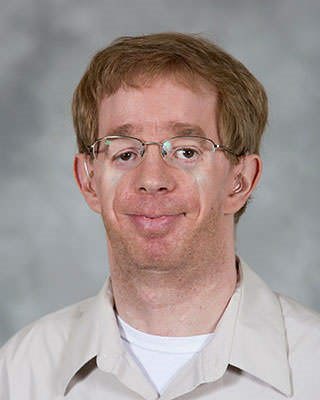"Just" Words Can Hurt: How Pediatricians Can Help Stop Bullying

Michael L. Goodman. MD, FAAP
October 17, 2019
“Did your parents give you up for adoption?”
This was the first question phrased to me by a parent of a child I was responsible for one day on the wards. I was stunned, but not for the reason you might think.
As a person born with Treacher Collins Syndrome, a congenital craniofacial disorder in which the bones of the face, jaws and middle ears are underdeveloped or missing completely, I was used to the staring, pointing, whispering, and snide remarks. What stunned me was that for the first time, I, as a non-parent, thought about a parent’s words dictating to their child what acceptable behavior is regarding people who look or act different.
Due to external and later internal bullying, my differences took me 37 years, including 2 suicide attempts in high school, to fully accept. Thanks to Auggie Pullman, a character in the book Wonder and movie of the same name who shares my syndrome, I have had the chance to share my story with over 25,000 elementary, middle, and high school students in Indiana, Ohio, and Arizona. In an effort to promote kindness and decrease bullying, we talk about how being different is okay.
How similar we are to other people, even if they look and/or act different.
How “just” words can hurt.
Modeling kind behavior
During my school talks, when I ask the kids what we have control over, our words and our actions come up often. This applies not only to children but also to adults. It is easy to forget how much kids pick up on by listening and watching others, even when they appear to be occupied with something else.
Research continues to show how remarkably sponge-like children’s brains are, and we have a duty as adults and pediatricians, inside or outside of our professional setting, to make sure they are soaking up good information. We can do this by modeling kind behavior ourselves in all aspects of our lives, at home, out in public, and in our roles as doctors. We need to watch our words and body language, including facial expressions.
As pediatricians, we need to emphasize to our learners and clinic and hospital staff that children who look and act different are still kids with the same interests and worries as any normally developed child. We need to remind them to focus on them as children, and not just their medical condition. Call them by their name when discussing them on rounds and not the “FLK” (funny looking kid).
Pediatricians who care for children with special needs or syndromes can consider coordinating with families and teachers to talk to their patients’ classes to answer questions in a non-judgmental way. Normally developed children should be introduced to the concept that children who look or act different did not choose their path and can still go on to do great things.
“Research continues to show how remarkably sponge-like children’s brains are, and we have a duty as adults and pediatricians, inside or outside of our professional setting, to make sure they are soaking up good information. We can do this by modeling kind behavior ourselves in all aspects of our lives, at home, out in public, and in our roles as doctors.”
-Michael L. Goodman, MD, FAAP
Bullying as a health risk
For all children in the outpatient setting, we should be asking about bullying behavior at well-child visits, starting before middle school age so problems can be discussed and appropriate referrals made. Children and parents should be interviewed separately when needed. Several American Academy of Pediatrics policy statements provide valuable guidance regarding bullying, and the U.S. Department of Health and Human Services’ StopBullying.gov website is another excellent resource for adults, children, and schools.
Bullying can have serious short- and long-term consequences in a variety of areas of a person’s life, including but not limited to medical, social, professional, academic, and relationship realms. Its harmful effects extend to those who are bullied, who bully others, and even those who witness but do not participate in bullying.
Partnering together with the children, parents, teachers, and community, we can decrease bullying significantly and hopefully end it.
*The views expressed in this article are those of the author, and not necessarily those of the American Academy of Pediatrics.
About the Author
Michael L. Goodman, MD, FAAP
Michael L. Goodman, MD, FAAP, a member of the Indiana Chapter of the American Academy of Pediatrics, is an Assistant Professor of Clinical Pediatrics at Indiana University School of Medicine and a Pediatric Hospitalist at Riley Hospital for Children at IU Health in Indianapolis. Follow him on Twitter or Instagram.